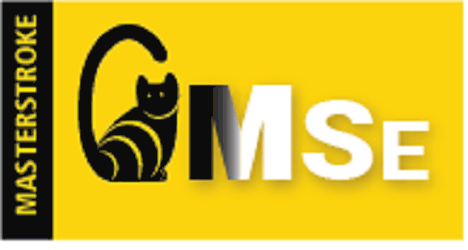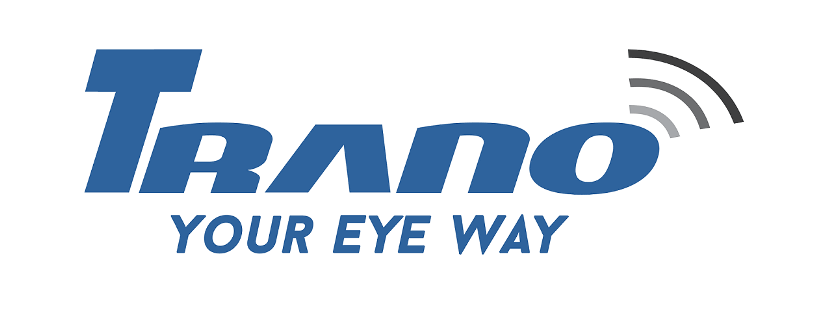Description

Rights Cloud - Digital Rights Management

Masterstroke
Comprehensive Overview: Rights Cloud - Digital Rights Management vs Masterstroke
Rights Cloud and Masterstroke are digital rights management (DRM) solutions focused on managing and protecting intellectual property rights across various industries. Here's an overview of both products:
a) Primary Functions and Target Markets
Rights Cloud:
Primary Functions:
- Rights Management: Provides tools for managing rights associated with digital assets, including images, music, videos, and documents.
- Asset Tracking: Ensures all digital assets are properly monitored and licensed across multiple platforms and channels.
- Contract Management: Automates the administration of legal agreements related to intellectual property.
- Usage Permissions: Defines and enforces rules around who can access, use, and distribute content.
Target Markets:
- Media and Entertainment
- Publishing
- Advertising
- Broadcasting
- Any industry reliant on digital and intellectual property
Masterstroke:
Primary Functions:
- Digital Asset Protection: Offers robust encryption and authentication measures to secure digital content.
- Licensing Solutions: Tailors licensing agreements and ensures compliance with regulations.
- Content Distribution Control: Restricts how and where content can be accessed and shared.
- Analytics: Provides insight into how and where digital content is used.
Target Markets:
- Film and Television
- Music Industry
- Online Streaming Services
- Educational Institutions
- Corporate Entities with proprietary content
b) Market Share and User Base
Rights Cloud:
- Market Share: Tends to have a significant presence in industries heavily dependent on managing large volumes of digital assets, such as media and advertising. However, its market share is fragmented across various competing services.
- User Base: Comprises primarily large enterprises and organizations needing extensive digital rights management capabilities. Adoption is common among multinational corporations with complex rights management needs.
Masterstroke:
- Market Share: Typically appeals to more niche markets focusing on high-value, high-security digital content. Its market share is substantial within the film, music, and entertainment sectors.
- User Base: Includes both large and medium-sized companies, as well as individual content creators who require strong protection and rights enforcement capabilities.
c) Key Differentiating Factors
Rights Cloud:
- Integration and Flexibility: Known for strong integrations with existing business workflows and software ecosystems, providing scalability for larger operations.
- Comprehensive Rights Network: Offers a more extensive network for rights tracking and enforcement across different media and geographies, which can be advantageous for global enterprises.
- Advanced Metadata Management: It excels with complex metadata tagging and management, benefiting industries relying heavily on detailed asset categorization.
Masterstroke:
- Security Focus: Emphasizes security features, including encryption and digital watermarking, making it appealing to industries where content protection is critical.
- Ease of Compliance: Provides tools designed to help organizations easily meet compliance regulations in different jurisdictions, useful for companies distributing content internationally.
- Specialized Support: Offers tailored customer support and bespoke service options for industries with unique DRM needs, such as custom licensing agreements and distribution controls.
Conclusion
Both Rights Cloud and Masterstroke meet the demands of DRM, but they cater to different aspects and markets - Rights Cloud with its broad, integrative approach ideal for complex and varied rights management, and Masterstroke focusing on security and compliance for high-value content distribution. Organizations typically choose based on their specific needs, scale, and industry demands.
Contact Info

Year founded :
Not Available
Not Available
Not Available
Not Available
Not Available

Year founded :
2021
Not Available
Not Available
Australia
http://www.linkedin.com/company/masterstrokeconsulting
Feature Similarity Breakdown: Rights Cloud - Digital Rights Management, Masterstroke
To provide an accurate feature similarity breakdown for Rights Cloud and Masterstroke, particularly in the domain of Digital Rights Management (DRM), let's focus on the typical features and functionalities associated with such solutions. As specific details and unique functionalities may vary based on vendor updates and offerings, this analysis will be based on common DRM system characteristics and some general insights.
a) Core Features in Common:
-
Rights Management: Both Rights Cloud and Masterstroke generally offer robust frameworks for defining, managing, and enforcing digital rights across various content types.
-
License Management: These systems typically provide solutions for creating and managing licenses, helping content creators and distributors control usage rights effectively.
-
Content Protection: Encryption and other security measures to protect digital content from unauthorized access are common features in both solutions.
-
User Access Control: Both platforms likely offer functionalities to define user roles and permissions, ensuring that only authorized users have access to specific content or features.
-
Audit and Compliance: Rights Cloud and Masterstroke would typically include auditing capabilities to track how content is used and ensure compliance with licensing agreements.
-
Content Tracking and Reporting: They both may offer analytics and reporting tools to monitor content usage, providing insights into how digital assets are being accessed and utilized.
b) User Interface Comparison:
Without specific screenshots or detailed descriptions from both platforms, the user interface comparison will be speculative. However, generally speaking:
-
Rights Cloud: Often known for a more flexible, cloud-based interface, focusing on ease of integration within various enterprise ecosystems. The UI may prioritize scalability and accessibility, especially for global teams.
-
Masterstroke: May present more specialized interfaces targeting specific industries or workflows. It might focus on offering a visually intuitive dashboard that emphasizes quick access to key features and data visualization.
Both platforms likely aim for user-friendly interfaces but could differ in customization levels, design aesthetics, and specific user journey optimizations based on their target market segments.
c) Unique Features:
-
Rights Cloud:
- Integration Capabilities: Might offer advanced integration with larger ecosystems, such as enterprise resource planning (ERP) systems and customer relationship management (CRM) solutions.
- Cloud-Based Flexibility: True to its name, it may provide superior cloud functionalities, including effortless scaling and remote access.
-
Masterstroke:
- Industry-Specific Solutions: Could have niche solutions tailored to particular industries, offering unique capabilities and workflow optimizations.
- Specialized Reporting Tools: Might focus on providing detailed, industry-specific analytics and reporting tools that align closer with sector-specific KPIs.
Ultimately, evaluating which service might be better will depend on specific business needs, including industry requirements, scalability, existing tech stack integration, and user preferences. It's advisable to seek detailed demos and case studies from each provider to ascertain which unique features align best with your organizational goals.
Features

Rights Management
Licensing Management
User Access Control
Reporting and Insights

Analytics and Reporting
Project Management
User Management
Collaboration Tools
Best Fit Use Cases: Rights Cloud - Digital Rights Management, Masterstroke
Rights Cloud - Digital Rights Management:
a) For what types of businesses or projects is Rights Cloud - Digital Rights Management the best choice?
-
Media and Entertainment: Companies in this sector, including film studios, television networks, and music labels, benefit greatly from Rights Cloud, as it manages and protects intellectual property across multiple platforms and formats.
-
Publishing: Book publishers and online content distributors can use it to manage licensing agreements, rights for various editions, and distribution to different geographical locations.
-
Brand Licensing: Businesses that license their brands (e.g., fashion, toys, or sports merchandise) can keep track of where and how their brands are used and ensure compliance with licensing terms.
-
Advertising Agencies: Agencies involved in creating multimedia content can manage usage rights for audio, video, and images to prevent unauthorized distribution and usage.
-
Gaming Industry: Video game developers and distributors can use it to handle complex licensing agreements and protect their intellectual property and diverse revenue streams.
b) In what scenarios would Masterstroke be the preferred option?
-
Intellectual Property-Heavy Industries: Industries that rely heavily on IP, such as pharmaceuticals, tech, and manufacturing, where protecting proprietary algorithms, formulations, or designs is crucial.
-
Companies with Complex Supply Chains: Masterstroke can help in scenarios where multiple vendors and products are linked, ensuring not just rights but compliance across the board.
-
Creative and Marketing Teams: Teams producing creative content for advertising or branding purposes, ensuring each asset's usage, expiration, and regional restrictions are respected.
d) How do these products cater to different industry verticals or company sizes?
-
Different Industry Verticals:
-
Media and Publishing: Both Rights Cloud and Masterstroke cater extensively to these sectors by automating rights management, thus increasing efficiency and reducing risks associated with rights violations.
-
Consumer Goods and Retail: Address brand protection challenges by offering tools to monitor and enforce brand usage across various channels and platforms.
-
Pharmaceutical and Technology: Masterstroke aligns more with industries that have less focus on content distribution and more on protecting proprietary technology or processes.
-
-
Company Sizes:
-
Large Enterprises: Both solutions are well-suited for large companies that deal with complex rights management across multiple divisions and geographies, needing robust solutions with extensive customization options.
-
Small to Medium Businesses (SMBs): These products can be tailored for SMBs that need only essential features and manageable scalability as they grow, without the overhead associated with large-scale implementations.
-
In essence, while both Rights Cloud and Masterstroke focus on managing digital rights and IP, their usability varies based on the intricacies of business needs and industry-specific challenges, thereby catering to a diverse audience across various sectors.
Pricing

Pricing Not Available

Pricing Not Available
Metrics History
Metrics History
Comparing teamSize across companies
Conclusion & Final Verdict: Rights Cloud - Digital Rights Management vs Masterstroke
To conclude and provide a final verdict on Rights Cloud - Digital Rights Management and Masterstroke, let’s evaluate which product offers the best overall value, analyze the pros and cons of each choice, and provide recommendations for potential users.
a) Considering all factors, which product offers the best overall value?
To determine the best overall value between Rights Cloud – Digital Rights Management and Masterstroke, it would depend on the specific needs and priorities of the user. Rights Cloud tends to offer a comprehensive approach with advanced rights management and integrative features that are ideal for large enterprises needing extensive digital asset protection and rights supervision. Masterstroke, on the other hand, might cater to users who prefer more specialized or streamlined capabilities, possibly at a more competitive price point.
Overall, Rights Cloud may offer the best value for businesses prioritizing scalability, robust security features, and comprehensive rights management solutions, while Masterstroke might be more valuable for smaller companies or those with specific use cases not requiring extensive integration or scalability.
b) What are the pros and cons of choosing each of these products?
Rights Cloud - Digital Rights Management
Pros:
- Comprehensive rights management features suitable for enterprise-level use.
- High-end security protocols for digital asset protection.
- Robust integration options with various existing platforms and systems.
- Strong customer support and resources for implementation and troubleshooting.
Cons:
- Potentially higher cost, which may not be justifiable for smaller operations.
- Complexity in setup and maintenance, requiring more technical expertise.
- May offer features that exceed the needs of smaller or less complex enterprises.
Masterstroke
Pros:
- Simplified user interface that may cater to users without extensive technical backgrounds.
- Possibly more cost-effective, presenting a good option for smaller businesses.
- Specializes in specific functionalities which can provide targeted solutions.
Cons:
- Might lack the advanced features and scalability needed for larger enterprises.
- Fewer integration options could limit compatibility with existing systems.
- Customer support and resources may not be as extensive as those of larger, established platforms.
c) Recommendations for users deciding between Rights Cloud - Digital Rights Management vs Masterstroke
-
Assess Business Needs: Users should start by thoroughly evaluating their business needs, size, and complexity of operations. If your company requires comprehensive, scalable solutions that integrate with various other platforms, Rights Cloud would likely be the better option.
-
Budget Considerations: Evaluate the budget constraints and consider long-term costs versus initial implementation costs. Smaller businesses or those with limited budgets may find Masterstroke a more fitting solution due to its potentially lower cost.
-
Technical Expertise: Consider the level of technical expertise within your team. If your team has the capability to handle complex systems, Rights Cloud's features could be fully utilized. Alternatively, Masterstroke might better serve teams looking for ease of use and straightforward implementation.
-
Trial and Feedback: Engage in trial versions or pilot tests of both systems, if available. Gather feedback from key stakeholders and end users to make an informed decision based on actual user experience.
-
Future Growth: Keep future growth in mind. If scalability and long-term expansion are part of your strategic goals, choosing Rights Cloud may align better with your vision.
By carefully examining these factors, users can make a well-informed decision to select the product that aligns best with their business objectives and resource availability.
Add to compare
Add similar companies



